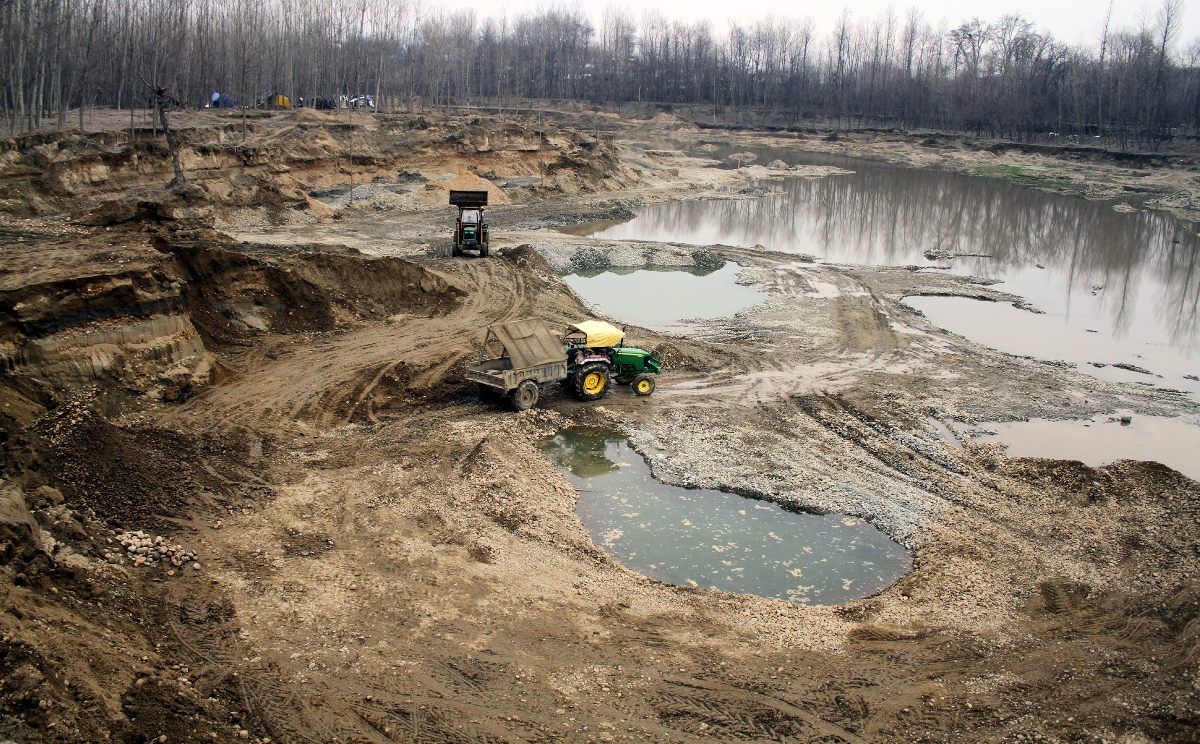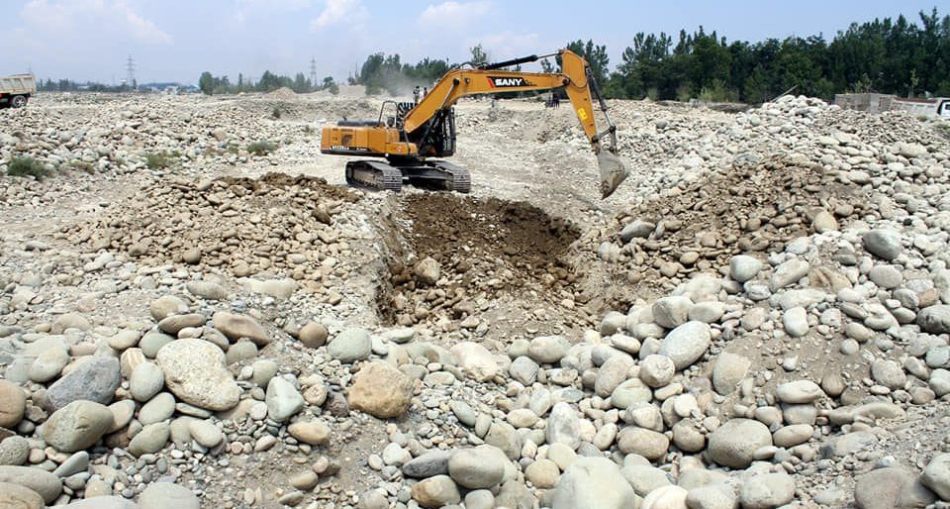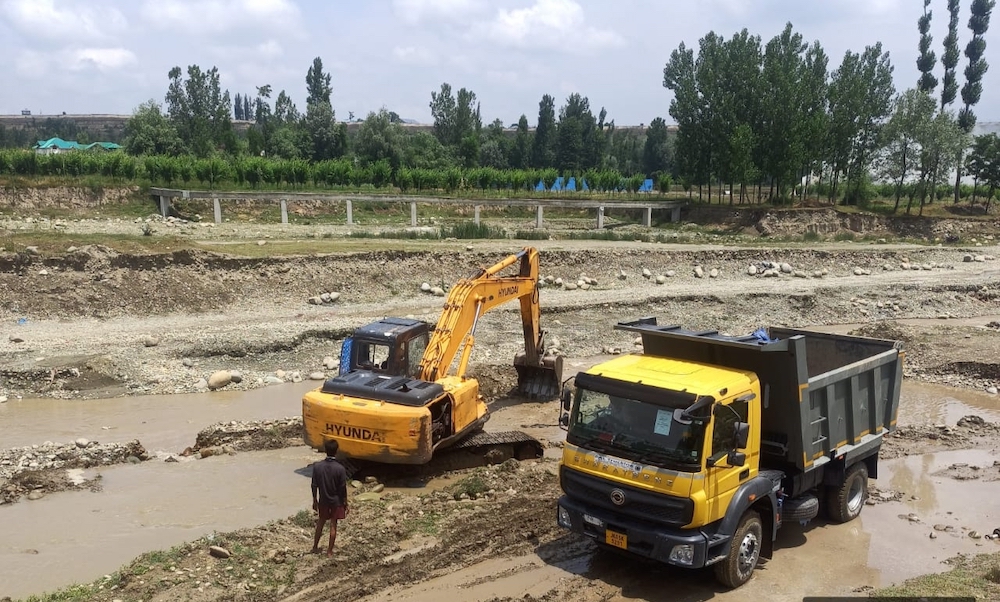Government officials avoid implementing rules till the vested interests resort to unfair means and destroy Kashmir’s water bodies. Dr Raja Muzaffar Bhat details how he pleaded before the National Green Tribunal (NGT) to make official work albeit with delay.
In a democratic system of governance, legislature, judiciary, and executive operate independently beyond exceeding their limits and powers. All these institutions work as per the mandate given to them by the Constitution.
Off late, it has been observed that the executive is unable to perform its duties and people have to seek judicial intervention to get the work done. In most such cases it takes years to get justice from the judiciary with the result that justice is denied to the citizens due to the lackadaisical attitude of the executive, and the government functionaries. The judiciary interfering with the works of the executive has become quite common now especially when Public Interest Litigation (PIL) is filed before various High Courts or even in the Supreme Court of India.
Making of NGT
In such situations, the National Green Tribunal (NGT) is coming to the rescue of the people. Established on October 18, 2010, under the National Green Tribunal Act of 2010, this is a specialised body for handling any environmental disputes that involve multi-disciplinary issues. It was formed by replacing the National Environment Appellate Authority. It also draws inspiration from Article 21 of the Indian Constitution which assures to provide a healthy environment to the citizens of India.
I have myself been filing cases in the NGT for more than 10 years now and have received several landmark judgments on the Tosamaidan field firing range, Wetland conservation in Kashmir, riverbed mining, Solid Waste Management and the setting up of several Sewerage Treatment Plants (STP) on Doodh Ganga.
The National Green Tribunal -NGT and other judicial institutions are addressing the needs of society through the PILs as the executive has failed to perform its functions. I found the NGT more effective than the High Courts and Supreme Court because the petitions filed only revolve around violation of environmental laws and rules and thus justice delivery is quick.
The Riverbed Mining
This write-up explains the intervention of NGT in streamlining Riverbed Mining in Jammu and Kashmir and orders passed by this forum in the last few years. Had authorities been proactive in implementing the Riverbed Mining Rules the damage would not have been so massive.
The organised mining mafia has devastated and plundered major tributaries of the Jhelum River like Doodh Ganga, Vaishav, Rambiara, Shali Ganga and other streams. Despite clear-cut directions for not using heavy machinery like JCBs, L&Ts and Poclain cranes, the officials of the Geology and Mining Department are allowing its use across Jammu and Kashmir. Only after NGT issued directions in my case, did these machines stop their activities in the Doodh Ganga, Shali Ganga and Romshi streams.

Recent PCC Order
The Jammu and Kashmir Pollution Control Committee (PCC) which was earlier called Jammu and Kashmir Pollution Control Board (PCB) last month directed the deputy commissioner of Pulwama to stop contractors from carrying out mining activity in Romshi and Rambiara streams passing through the Pulwama district. The contractors who were allotted the work by the Geology and Mining Department had violated the guidelines of Jammu and Kashmir Minor Mineral Concession Rules 2016 and other laws. In two separate orders issued on February 1, 2024, the PCC directed the contractors M/S Khursheed Ahmad and M/S Umesh Kumar Sharma to cease the operation of the mining activity.
The background of the order is that this author had moved a formal petition in NGT against the illegal riverbed mining in Shali Ganga, Doodh Ganga and Romshi nallah on different occasions in the last three years. The contractors and project proponents had violated the guidelines on which Environmental Clearances (ECs) were given to them by the Jammu and Kashmir State Environmental Impact Assessment Authority (SEIAA). The ECs for the different riverbed mining locations were granted on the condition that mining would be conducted manually with minimal reliance on mechanised methods, and that no heavy machinery could be used.
After the NGT intervention illegal mining has already been banned in Shali Ganga , Doodh Ganga and no machines have been used there since June 1, 2023, when the NGT came heavily on the Jammu and Kashmir Government. The Principal Secretary of the Housing and Urban Development Department, Commissioner Srinagar Municipal Corporation, Deputy Commissioner Budgam, Director Mining and District Mineral Officer Budgam were present during the hearing before NGT on May 27, 2023.
The illegal riverbed mining continues in other districts. The construction company which was involved in illegal riverbed mining in Shali Ganga has been taking out boulders from Nallah Sukhnag for more than a year at Sail Village Beerwah in Budgam and the district administration Budgam and Geology and Mining Department isn’t acting against them. The locals keep telling me about all this but the administration is reluctant to file a petition in NGT.
The JK Pollution Control Committee (JKPCC) acted in Rambiara and Romshi cases only after NGT sought reports from them and they had no option to act. Had JKPCC acted two or three years back the damage would not have been massive. All the Government bodies like SEIAA, Geology and Mining Department, JKPCC, Flood Control Department, Fisheries Department, Revenue Officials, Jammu and Kashmir Police are equally responsible for the destruction caused to our water bodies, especially the streams.
A Silent Custodian
After I moved to NGT against illegal mining in Doodh Ganga the then District Mineral Officer (DMO) Budgam Geology and Mining Department targeted local lorry and truck drivers (tipper, tractor trolley drivers) by imposing hefty penalties on them under the pretext of Environmental Compensation. He wanted to evade the wrath of NGT but I submitted the factual details to the Tribunal.
The DMO gave a clean chit to contractors and project proponents who were not only using JCBs but were also using L&T cranes, besides, going as deep as 20 to 25 meters from the banks of Doodh Ganga (See Images taken by this author in 2022). The DMO didn’t take any action against the erring project proponents who had sublet the work to a third party.
The project proponents were even summoned by the NGT later on and since June 1, 2023, the use of heavy machinery has been stopped in Doodh Ganga and Shali Ganga. For the last few months, this has been halted in the Romoshi stream as well as around Wahibug Pulwama but the said nallah has already suffered massive damages.

Chairman DDCs Letter
The Chairman District Development Council (DDC), Budgam on September 30, 2022, wrote a letter to Deputy Commissioner Budgam showing his concern against illegal riverbed mining and asked him to probe into the irregularities committed by Government officials. The letter sought action against government officials who had been mute spectators while illegal riverbed mining activity was carried out in the Shali Ganga, Doodh Ganga streams. The DDC Chairman’s letter reads:
“The NGT has observed that the project proponent has used heavy machines for excavation. NGT has also raised serious concerns over the procedure followed by the State Environmental Impact Assessment Authority (SEIAA) while giving prior environmental clearances. The NGT has further assessed that the sand mining in the riverbed has serious consequences. At the outset, the concerns raised by the litigant before the NGT should have been addressed by the officers at the district level only. It is only the result of their carelessness that the National Green Tribunal has now taken cognizance of the issue. The tribunal has now issued a 212-page judgment highlighting the huge administrative and environmental lapses on the part of the Geology and Mining Department and other concerned departments like the Flood Control Department, Fisheries and District Pollution Board etc. I request you to order a probe into this so that those officers who allowed the unabated environmental degradation are put to task.”
To some extent the then Deputy Commissioner Budgam, Dr S F Hamid acted against the illegal mining, but no formal probe was conducted.
Minor Mineral Rules 2016
To control illegal mining, around 8 years ago, the BJPDP government floated new rules called the Jammu and Kashmir Minor Mineral Concession, Storage and Transportation of Minerals and Prevention of Illegal Mining Rules 2016. In an order (March 19, 2019), the Industries and Commerce Department decided to allot mineral blocks through e-auctions. District-level e-auction committees were constituted, headed by District Magistrates. Senior officers and engineers from the PWD, Irrigation and Flood Control, Geology and Mining and Finance departments are members of these committees.
The Department of Geology and Mining has also moved from open auctions to e-auctions. So far, more than 173 mineral blocks across Jammu and Kashmir have been notified for the e-auctioning.
Before 2016 the Geology and Mining Department would only take royalty from the people involved in the mining trade including truck drivers carrying the riverbed material (RBM) like sand, boulders, nallah bajri etc.
Dangerous Situation
If we analyse anything that has changed after the Government invoked new rules or e-auctioned the mining blocks in different water bodies (rivers, streams, nallah’s), I believe that the situation has deteriorated. My analysis is not hypothetical but it is based on in-depth research and analysis that I have been doing for almost a year now.
From 2020 to 2023 the riverbed mining contracts have increased and more material is available in the market. I know at least eight to ten riverbed mining blocks have been allotted in Budgam and Pulwama in Doodh Ganga, Shali Ganga, Romshi and Rambiara streams. In these areas, illegal mining used to take place but with small machines. But from 2020 after e-auctioning the huge JCBs, Poclain cranes started excavating minor minerals like sand, nallah muck, nallah bajri, boulders. The rates of this material have doubled or gone up three times also.
The Minor Mineral Concession Rules 2016 and State Environmental Impact Assessment Authority -SEIAA guidelines make it clear that mining can not be done more than two meters deep, but in all the streams 20 to 25 meters deep trenches have been dug. Mining is also prohibited at night hours but that never stopped. No CCTVs are being used by the contractors at the mining sites.

Pic: Raja Muzaffar Bhat
Rates of RBM Surged
The rates of Riverbed Material (RBM) have skyrocketed in the last four years. Right now, the sand is sold at Rs 16000 per truckload in areas located barely six to ten km from the mining blocks. On the other hand Specific Guideline No 5 of Jammu and Kashmir State Environmental Impact Assessment Authority (SEIAA) makes it clear that river bed mining material has to be sold at a 50 per cent discount to the local population within a km radius of mining blocks. Ironically the material is not even sold at Government rates in the villages located just 500 meters away from mining blocks.
When I spoke to some residents of villages Sogam, Badipora, Panzan, Lalgam, Lalgund, and Gudsathoo, they told me that despite being located 500 meters to one km away from the mining site of Doodh Ganga and Shali Ganga, they get sand at Rs 15000 per tipper and rate of other material is also double or even more. Before NGT intervention and subsequent imposition of penalty on Government to the tune of Rs 35 crores the local labourers would not even get the work.
It is only for the last eight to nine months that we see local labourers working in Doodh Ganga and Shali Ganga. Earlier only machines like JCBs, and L&T cranes would do that job. But this illegal work continues in other districts and authorities are unmoved.
Conclusion
How is it possible for every citizen to seek judicial intervention for environmental protection or file a case before the NGT? The Government officials working in the Pollution Control Committee, Geology and Mining Department, and Flood Control Department get hefty salaries and if they are unable to control illegal riverbed mining on their own, it is clear that they are collaborators in this crime.
Why are they acting only after NGT’s orders and not taking any action proactively? These are some of the questions which these Government officials must answer. My fight against illegal riverbed mining would continue as the cases are being heard every two months by NGT.
(The author is a Srinagar-based social activist, writer and independent researcher. He is a Climate Action Fellow at Anant National University Ahmedabad.)















